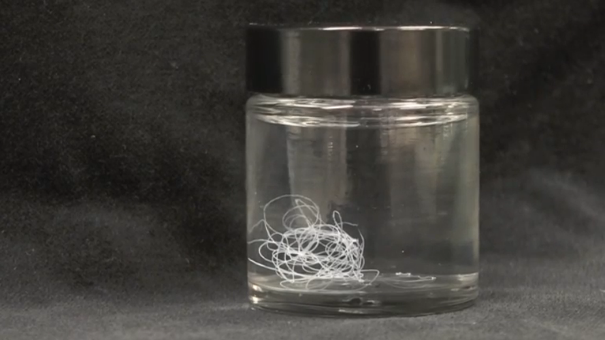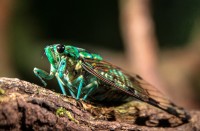
(Reuters) — A team of Swedish researchers from the University of Agricultural Sciences and the Karolinska Institute has discovered a way to artificially create one of the strongest, most tensile natural substances known to man – spider silk.
Stronger than steel, weight for weight, spider silk also possesses properties which make it ideal for a wide variety of medical uses, but previous attempts to use captive spiders or to make it artificially have not produced satisfactory results.
That all changed when the Swedish team of Anna Rising, Marlene Andersson and Janne Johansson decided to go back to the source.
“We realised that nobody actually knows how the spider spins its silk, so Marlene, she set out to determine how the spider spins its silk,” Rising told Reuters at the Centre for Veterinary Medicine and Animal Science in Uppsala, north of Stockholm.
“What she did was she dissected glands, silk glands from the spiders, and then she used ion-selective micro-electrodes – these are really tiny electrodes – that she used to determine the conditions along the glands. So we could see what changed along the glands and what factors trigger the polymerization process.”
Andersson’s analysis of the glands enabled the team to begin spinning their own silk without any help from spiders, by creating an artificial protein that can be produced in large quantities in bacteria.
“We have a set-up where we have our highly-concentrated recombinant or artificial protein in a syringe that we pump through tubing and then through a narrowing glass capillary – a very small glass tube,” she explained as she demonstrated the process. And then we pump the protein into a low PH solution, so an acidic solution. And then the fibres form instantaneously as the protein hits the low PH buffer,” Andersson explained.
So far the team has produced strands of silk up to a kilometre long, and the fact that no expensive chemicals are needed to produce it means that the process is suitable for scaling up to an industrial level.
Given its properties, the artificial silk could have a vast range of uses, but the team believes that it is most likely destined for use in medical situations.
“It could be used as scaffolds for growing cells and tissues to implant in human bodies to replace and restore malfunctioning tissues in organs, which is called regenerative medicine,” Johansson said.
They might have made the initial breakthrough, but the work is not yet done for the research trio. They are currently investigating how to make their artificial version as strong as the real thing.
“They’re not as strong as the native stuff, but it’s possible so I think we and maybe some other researchers can now develop it into something which really can mimic spider silk in the future,” Johansson said.







